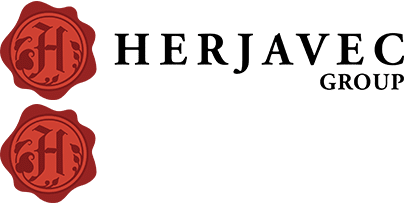Ransomware and Recent Variants
April 7, 2016
The United States Department of Homeland Security (DHS), in collaboration with Canadian Cyber Incident Response Centre (CCIRC), released the following alert to provide further information on ransomware including its main characteristics, its prevalence, variants that may be proliferating, and how users can prevent and mitigate against it. Herjavec Group is circulating the advisory below as this information warrants attention and may have significance to your Enterprise network environment. If the following advisory is applicable to your environment, Herjavec Group recommends your IT team review the technical details included and monitor your environment for any susceptible systems. Herjavec Group’s analysts are working with applicable vendor partners to apply detection and mitigation strategies for our customers where appropriate. If you have questions or concerns, please contact us.
In early 2016, destructive ransomware variants such as Locky and Samas were observed infecting computers belonging to individuals and businesses, which included healthcare facilities and hospitals worldwide.
Ransomware is a type of malicious software that infects a computer, encrypts the data found on the local machine and spreads via network shares. The authors of ransomware instill fear and panic into their victims, asking them to click on a link or pay a ransom for the release of their data.
Systems infected with ransomware are also often infected with other malware. In the case of CryptoLocker, a user typically becomes infected by opening a malicious attachment from an email. This malicious attachment contains Upatre, a downloader, which infects the user with GameOver Zeus. GameOver Zeus is a variant of the Zeus Trojan that steals banking information and is also used to steal other types of data.
Ransomware not only targets home users; businesses can also become infected with ransomware, leading to negative consequences, including
- temporary or permanent loss of sensitive or proprietary information,
- disruption to regular operations,
- financial losses incurred to restore systems and files, and
- potential harm to an organization’s reputation.
Infections can be devastating to an individual or organization, and recovery can be a difficult process that may require the services of a reputable data recovery specialist.
Well-Known Variants
In 2013, more destructive and lucrative ransomware variants were introduced, including Xorist, CryptorBit, and CryptoLocker. Some variants encrypt not just the files on the infected device, but also the contents of shared or networked drives. These variants are considered destructive because they encrypt users’ and organizations’ files, and render them useless until criminals receive a ransom.
In early 2016, a destructive ransomware variant, Locky, was observed infecting computers belonging to healthcare facilities and hospitals in the United States, New Zealand, and Germany. It propagates through spam emails that include malicious Microsoft Office documents or compressed attachments (e.g., .rar, .zip). The malicious attachments contain macros or JavaScript files to download Ransomware-Locky files.
Samas, another variant of destructive ransomware, was used to compromise the networks of healthcare facilities in 2016. Unlike Locky, Samas propagates through vulnerable Web servers. After the Web server was compromised, uploaded Ransomware-Samas files were used to infect the organization’s networks.
Solutions
Take the following preventive measures to protect your computer networks from ransomware infection:
- Employ a data backup and recovery plan for all critical information. Perform and test regular backups to limit the impact of data or system loss and to expedite the recovery process. Ideally, this data should be kept on a separate device, and backups should be stored offline.
- Use application whitelisting to help prevent malicious software and unapproved programs from running. Application whitelisting is one of the best security strategies as it allows only specified programs to run, while blocking all others, including malicious software.
- Keep your operating system and software up-to-date with the latest patches. Vulnerable applications and operating systems are the target of most attacks. Ensuring these are patched with the latest updates greatly reduces the number of exploitable entry points available to an attacker.
- Maintain up-to-date anti-virus software, and scan all software downloaded from the internet prior to executing.
- Restrict users’ ability (permissions) to install and run unwanted software applications, and apply the principle of “Least Privilege” to all systems and services. Restricting these privileges may prevent malware from running or limit its capability to spread through the network.
- Avoid enabling macros from email attachments. If a user opens the attachment and enables macros, embedded code will execute the malware on the machine. For enterprises or organizations, it may be best to block email messages with attachments from suspicious sources. For information on safely handling email attachments, see Recognizing and Avoiding Email Scams. Follow safe practices when browsing the Web. See Good Security Habits and Safeguarding Your Data for additional details.
- Do not follow unsolicited Web links in emails. Refer to the US-CERT Security Tip on Avoiding Social Engineering and Phishing Attacks for more information.
Individuals or organizations are discouraged from paying the ransom, as this does not guarantee files will be released. Report instances of fraud to the FBI at the Internet Crime Complaint Center.
About Herjavec Group:
Dynamic IT entrepreneur Robert Herjavec founded Herjavec Group in 2003, and it quickly became one of North America’s fastest-growing technology companies. Herjavec Group delivers managed security services globally supported by a state-of-the-art, PCI compliant Security Operations Centre (SOC), operated 24/7/365 by certified security professionals. This expertise is coupled with a leadership position across a wide range of functions including compliance, risk management & incident response. Herjavec Group has offices globally including three headquarters in Toronto (Canada), New York City (USA) and Reading (United Kingdom). The organization recently entered the Australian market and plans to establish a local presence there over the coming months.
